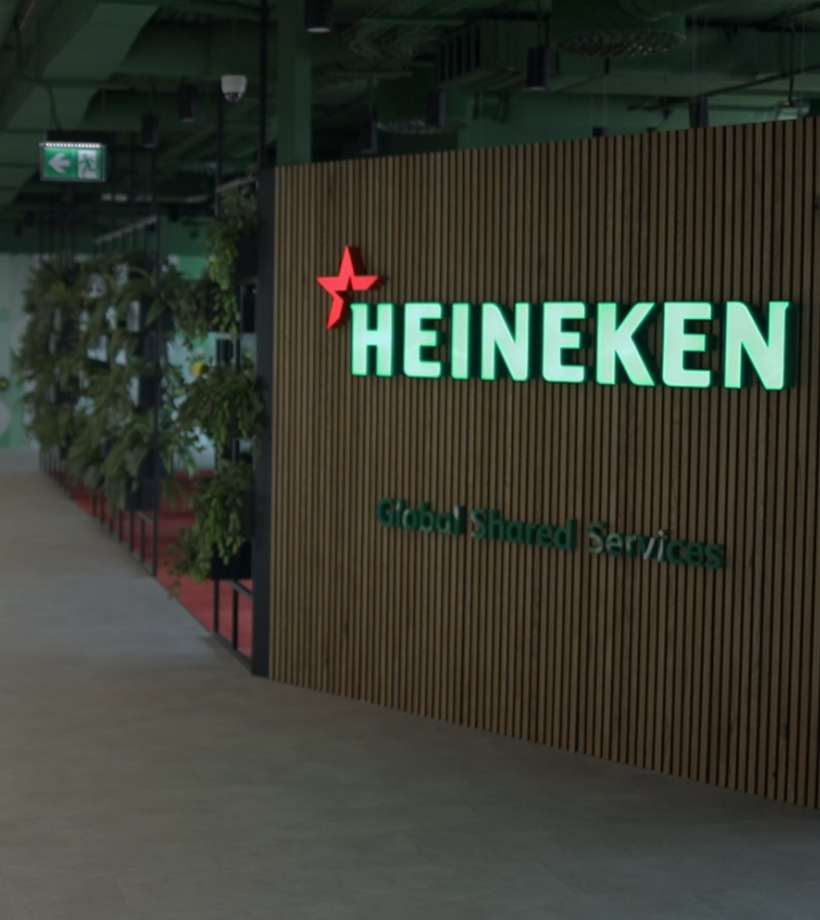-
Featured services
2026 Global AI Report: A Playbook for AI Leaders
Why AI strategy is your business strategy: The acceleration toward an AI-native state. Explore executive insights from AI leaders.
Access the playbook -
Services
Alle Services und Produkte anzeigenNutzen Sie unsere Fähigkeiten, um die Transformation Ihres Unternehmens zu beschleunigen.
-
Services
Network-Services
Beliebte Produkte
-
Services
Cloud
Beliebte Produkte
-
Services
Consulting
-
Edge as a Service
-
Services
Data und Artificial Intelligence
- KI und intelligente Lösungen
- Daten-/KI-Strategie und -Programm
- Data Engineering und Plattformen
- Daten-Governance und -management
- Datenvisualisierung und Entscheidungsfindung
- $name
- GenAI Platforms
- GenAI Industry Services
- GenAI Infrastructure Services
- GenAI Value Transformation
- Data und Artificial Intelligence
-
-
Services
Global Data Centers
-
Beliebte Produkte
-
Services
Application Services
-
Services
Sustainability Services
-
Services
Digital Workplace
-
Services
Business Process Services
-
Services
Generative AI
-
Services
Cybersecurity
-
Services
Enterprise Application Platforms
![]()
IDC MarketScape: Anbieterbewertung für Rechenzentrumsservices weltweit 2023
Wir glauben, dass Marktführer zu sein eine weitere Bestätigung unseres umfassenden Angebotes im Bereich Rechenzentren ist.
Holen Sie sich den IDC MarketScape -
-
Erkenntnisse
Einblicke und RessourcenErfahren Sie, wie die Technologie Unternehmen, die Industrie und die Gesellschaft prägt.
-
Erkenntnisse
Ausgewählte Einblicke
-
Die Zukunft des Networking
-
Using the cloud to cut costs needs the right approach
When organizations focus on transformation, a move to the cloud can deliver cost savings – but they often need expert advice to help them along their journey
-
So funktioniert Zero-Trust-Sicherheit für Ihr Unternehmen
Sorgen Sie dafür, dass Zero-Trust-Sicherheit für Ihr Unternehmen in hybriden Arbeitsumgebungen funktioniert.
-
-
Erkenntnisse
![]()
Copilot für Microsoft 365
Jeder kann mit einem leistungsstarken KI-Tool für die tägliche Arbeit intelligenter arbeiten.
Copilot noch heute entdecken -
-
Lösungen
Alle LösungenWir helfen Ihnen dabei, den Anforderungen an kontinuierliche Innovation und Transformation gerecht zu werden
Global Employee Experience Trends Report
Excel in EX mit Forschung basierend auf Interviews mit über 1.400 Entscheidungsträger:innen auf der ganzen Welt.
Besorgen Sie sich den EX-Report -
Erfahren Sie, wie wir Ihre Geschäftstransformation beschleunigen können
-
Über uns
Neueste Kundenberichte
-
Liantis
Im Laufe der Zeit hatte Liantis, ein etabliertes HR-Unternehmen in Belgien, Dateninseln und isolierte Lösungen als Teil seines Legacysystems aufgebaut.
-
Randstad
We ensured that Randstad’s migration to Genesys Cloud CX had no impact on availability, ensuring an exceptional user experience for clients and talent.
-
-
![Heineken Landing Page]()
NTT DATA und HEINEKEN
HEINEKEN revolutioniert die Mitarbeitererfahrung und die Zusammenarbeit mit einem hybriden Arbeitsplatzmodell.
Lesen Sie die Geschichte von HEINEKEN -
- Karriere
Topics in this article
Many organizations struggle to keep up with ever-evolving technology: rising costs and a lack of skills or resources can place plenty of strain on in-house IT teams. The logical solution is to work with a managed service provider (MSP) to procure support services – but new technologies and corporate needs have also sparked changes in this area.
NTT is a long-time provider of support services under our Technology Solutions banner, including software-defined infrastructure services (SDIS), and we have noticed that our clients now increasingly emphasize measurable business outcomes. They understand we live in a complex world, but they don’t want to deal with the complexity by themselves. So, we need to gain deep insight into their digital transformation to determine how best to support them.
Of course, support services lay the foundation for many of the other products and services we offer at NTT. To maintain this strong and comprehensive ecosystem, we have to strategically align several moving parts, including financial models (both ours and our clients’, so we understand what a return on investment would entail); the quality of the services we deliver; and the overarching business strategy on both sides.
Automation and AI
An ever more prominent trend in support services – as in so many areas of business right now – is using automation and AI to optimize efficiency.
Within Technology Solutions, we focus on three areas to establish a clear picture of a client’s install base: asset availability, license management and hardware insights. Together, these help us understand the client’s ever-shifting business challenges – but the data gathered along the way can now also be used in foundational training for generative AI.
Once our clients in this area have gained full visibility and control of their infrastructure lifecycle, it paves the way for us to offer AI-enabled customer support such as conversational ticketing or advanced chatbots.
So, this strategy relies on first getting a client’s house in order before we can create a clean and continually updated set of data relating to their install base.
Excellence in customer experience
Like any other type of organization, MSPs also keep improving their customer experience (CX).
At NTT, our decades of experience in managing software-defined infrastructure and asset availability have evolved into our current SDIS offering. It anchors our broader MSP business and shapes our approach to client success.
This approach is supported by our range of well-established vendor partnerships, especially with Cisco, and our expertise in interpreting our clients’ data.
The challenge lies in collecting and harnessing all available client data – every single breadcrumb they leave across the plethora of tools and platforms they use – and applying analytics to create actionable insights. (Again, clean data sets are also key to enabling the use of generative AI tools that support great CX.)
It’s about being proactive and thorough in gaining an understanding of their business and then providing relevant, reliable and accessible customer service.
The adoption of technology
Making the adoption of new technology as streamlined as possible is a core pillar of our support services. Thanks to our vendor partnerships, we can provide recommendations and insights that help our clients get the best possible return from their investments in technology.
Technology adoption is deeply intertwined with clients’ perceptions and experiences of a product. They want to adopt technology that they perceive as relevant and that resonates with them, lending a social aspect to the experience beyond the usual corporate checklist.
In a recently published TheoryHub ebook, Davit Marikyan and Savvas Papagiannidis write about the unified theory of acceptance and use of technology. They highlight the pivotal role of:
- Performance expectancy: Individuals’ view of the expected performance of specific technology; in other words, what will it do for them where they deploy it?
- Effort expectancy: How difficult is it to use the technology, and how quickly can they get the gist of it?
- Social influence: How popular is the technology? Do other organizations in their corporate community also use it? Is it custom-built for specific use cases only?
- Facilitating conditions: Will the organization make adopting this technology a priority? How easy will it be, for example, to obtain licenses for the different communities within the organization?
To ensure the successful adoption of new technology, support services must address all four of these factors during implementation.
Of course, we also want our clients to adopt technology that forms part of our Technology Solutions, such as our Service Portal and Digital Wallet. The motivation is that these work together to create a single pane of glass that provides full visibility of the client’s technology across myriad types of software, Enterprise Agreements and licenses.
This helps us understand, for example, if a collaboration tool like Cisco Webex is performing to a client’s expectations. Do employees have access across the board? Is everyone using it or are some still collaborating on Microsoft Teams or Zoom? Is it used only in certain business units like sales? How easy is it to obtain licenses and resolve support tickets?
Our lifecycle specialists can then use the lenses of performance expectancy, effort expectancy, social influence and facilitating conditions to analyze the full lifecycle support needed for a specific technology and find a way to overcome any stumbling blocks.
Security and compliance
Upholding security and compliance throughout the lifecycle of technology is nothing new – but what is evolving is the role of lifecycle specialists to support compliance and data protection for our clients through the recommendations and insights they provide.
It goes beyond just defining and documenting these requirements. The evangelists of the product (in this case, our Technology Solutions specialists) also have to continually support the requirements through the recommendations they offer a client.
Amid the rise of generative AI models, data protection has become even more important and stringent. Our lifecycle specialists have to be proactive in safeguarding organizations’ sensitive information and fostering trust: our clients should never feel it is unclear how and where their data is stored or processed, for instance.
Stepping up to the challenge
In conclusion, the support services landscape in 2023 demands a comprehensive understanding of client outcomes and how Technology Solutions lays the groundwork for automation and AI, relying on clean and complete data sets. This also makes it easier to ensure excellence in CX and the seamless adoption of new technology.
At NTT, we embrace the challenge not only to adapt but also to thrive in this exciting era of digital transformation.
Read more about NTT’s Support Services to see how you can get access to expertise and insights at the right time to accelerate your business success.




